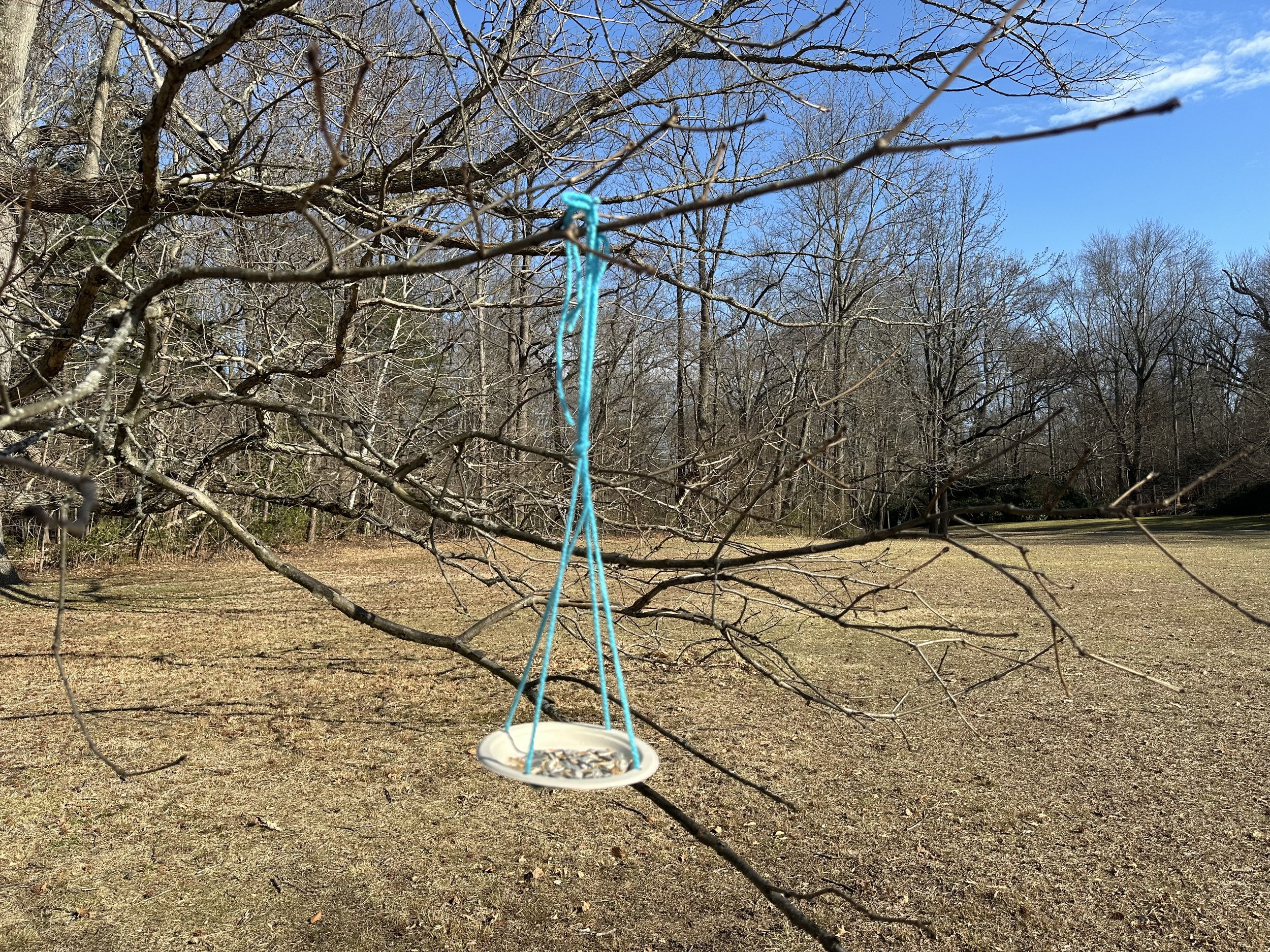BACKYARD LEARNING
March 2025
We Love Celebrating Women’s Stories!
Every month in Backyard Learning, we showcase a unique aspect of Old Westbury Gardens’ educational programming. Through articles and activities, we aim to foster a deeper connection with nature—even when you're not physically at the Gardens!
An illustration from Virginia Lee Burton's "The Little House." (Courtesy Cape Ann Museum)
Storybook Stroll Returns April 5th!
We’re thrilled to bring back our Storybook Strolls, starting on April 5th! Each month, we’ll feature a beloved children’s book, inviting families to explore the Gardens through reading and hands-on crafts.
While we eagerly await our first stroll, we couldn’t let March pass without a story! In honor of International Women’s Day, we’ve chosen a classic tale by a remarkable woman author and illustrator—The Little House by Virginia Lee Burton. We encourage you to visit your local library to pick up a copy and try our special Little House-inspired origami craft at home!
The Little House by Virginia Lee Burton
This timeless story follows a small house in the countryside as the world around it changes. Through beautifully detailed illustrations, Burton reminds us of the importance of home, history, and caring for the places we love—just like Old Westbury Gardens!
Who Was Virginia Lee Burton?
Virginia Lee Burton (1909–1968) was an award-winning author and illustrator, best known for classics like Mike Mulligan and His Steam Shovel, Katy and the Big Snow, and The Little House, which won the prestigious Caldecott Medal.
Beyond books, Burton was also a talented designer. She founded the Folly Cove Designers, a group of artists celebrated for their intricate, hand-printed fabric patterns. She believed that both art and storytelling should be accessible, meaningful, and full of life—a spirit that shines through in all her work.
Our Education Manager, Laura first discovered the works of this amazing woman when she went to the Cape Ann Museum, besides her stories she saw her beautiful work with the Folly Cove Designers.
Celebrating International Women’s Day – March 8th
International Women’s Day is a time to honor the achievements of women throughout history—artists, scientists, leaders, and innovators who have shaped our world. Virginia Lee Burton’s stories continue to inspire young readers and creators, showing how imagination and determination can help build the future.
Origami Little House Craft
The Little House reminded us of our own charming Thatched Cottage at Old Westbury Gardens! This special little house was a gift to Peggy Phipps when she was just 10 years old.
Get creative with our Little House-inspired origami tutorial and bring this beloved story to life!
Supplies You’ll Need:
Paper
Markers
Instructions:
Fold your paper in half horizontally.
Open up your square and repeat Step 1 vertically.
Open your square, and fold from the bottom to the halfway line you created in Step 1 & 2.
Flip so the fold is vertical and facing down. Then fold the bottom edge to the halfway point.
Fold the top edge in Step 4 down to the halfway point.
Lightly tug the top flap you’ve crated, and fold on the diagonal to create a triangle shape.
Repeat Step 6 on the other side.
Fold the bottom edge up to the halfway point.
Decorate your origami house! Use your creativity and decorate your little house!






February 2025
We Love Birdwatching!
Every month in Backyard Learning, we showcase a unique aspect of Old Westbury Gardens’ educational programming. Through articles and activities, we aim to foster a deeper connection with nature—even when you're not physically at the Gardens!
February is National Bird Feeding Month!
In 1994, Congress established February as National Bird Feeding Month to raise awareness about feeding and watching birds. Winter can be a tough time for birds as food becomes scarce, but you can help by making a simple bird feeder! Not only will you support local birds, but you'll also get a chance to observe them up close.
Birds at Old Westbury Gardens
Old Westbury Gardens is home to a variety of birds, each adding beauty and character to the landscape. Chimney Swifts are small, sooty-grey birds that spend most of their time in flight, catching insects midair. American Goldfinches, with their bright yellow feathers, are active seed-eaters often seen flitting among flowers. Blue Jays, known for their striking blue plumage and loud calls, are intelligent and bold. Cardinals stand out with their brilliant red color, especially against the winter snow. Grackles are sleek black birds with iridescent feathers and can look similar to Starlings and Blackbirds.
One of our Education Manager’s favorite birds to spot is the Great Blue Heron, a tall, graceful visitor that she was lucky enough to photograph this year!
Want to Try Birdwatching?
Did you know that 3 out of 10 Americans take part in birdwatching? If you want to give it a try, here are some helpful tips:
Be Patient and Quiet – Birds are easily startled! Find a spot, stay still, and wait quietly.
Go Early in the Morning – Birds are most active in the morning when they’re looking for food.
Use a Bird Guide – Try the Merlin Bird ID app from Cornell to identify birds by photo or song. A Long Island bird guidebook can help, too!
Make Your Own Bird Feeder
Want to help our feathered friends this winter? Try making this easy bird feeder and see what birds visit!
Supplies You’ll Need:
Pine cone
Sweetgum Ball
String
Peanut butter
Bird seed
Plastic knife
Instructions:
Use a plastic knife to spread peanut butter all over the pine cone and sweetgum ball.
Roll the pine cone or sweetgum ball in birdseed, making sure it sticks.
Tie a string around the top of the pine cone and sweetgum ball.
Hang your bird feeder on a tree branch and watch the birds enjoy their treat!
We’d love to see your bird feeder creations!
Share your pictures and let us know what birds you spot. Tag us on Instagram @oldwestburygardenskids
Happy birdwatching!






January 2025
We Love Deco at 100!
Every month in Backyard Learning, we showcase a unique aspect of Old Westbury Gardens’ educational programming. Through articles and activities, we aim to foster a deeper connection with nature—even when you're not physically at the Gardens!
This January, the staff of Old Westbury Gardens became the students. Instead of welcoming visitors to our grounds, we visited the Deco at 100 exhibit at the Nassau County Museum of Art. It is fundamental for our staff and educators to stay updated on historical knowledge and remain engaged with other cultural institutions on Long Island. We were fortunate to meet with Einav Dembin (Lead Educator), Michelle Badzim (Manager of School Programs), Alex C. Maccaro (Assistant Curator), Noemi Fletcher (Education & Public Programs Coordinator) and Laura Lynch (Director of Education at the Nassau County Museum of Art). They provided us with an incredible tour of the exhibit and shared insights on how they conduct field trips to engage students of all ages.
We were charmed by how the museum’s educators engage their students through the five senses. By presenting images of architectural elements, related exhibit details to famous structures, they allow students to touch sample materials and even play Jazz Era music to set the scene. The staff tailored our visit to highlight the story of Art Deco on Long Island, sharing insights into the Frick family, the mansion’s history, and how the exhibit’s art reflects societal changes of the time.
The Deco at 100 exhibit opens with an Arnold Constable poster that ties the theme together: “Commemorating the mode of yesterday, presenting the mode of today, forecasting the mode of tomorrow.” Art Deco embodies this with a reflection on history, incorporating references to ancient Greek and Egyptian cultures while also embracing modern materials like chrome. One of the highlights of the exhibit was a timeline that provided historical context, allowing visitors to connect social and political events with the art of the period.
Our staff was especially excited to see a couple of pieces of Old Westbury Gardens' history on display. In the first gallery room, a stunning 1930s silk, satin, and tulle dress from Chez Ninon, loaned from Old Westbury Gardens, complements the exhibit’s theme. The exhibit beautifully showcases how Art Deco influenced not just fine art and furniture but also fashion, which is a great passion of our Education Manager, Laura. Upstairs, we were delighted to see a digital video featuring Peggie Phipps with her bridal party at Old Westbury Gardens circa 1930. Watching Peggie in the very spaces where modern-day brides now take their wedding photos was a special full-circle moment for our staff.
Visiting museums and expanding our historical knowledge helps us enhance our tours at Old Westbury Gardens. Each of our tour guides has a particular passion—whether it’s family stories, architecture, notable guests, or the technology behind the house’s construction. By broadening our perspectives, we make visits to Old Westbury Gardens even more enriching for our guests.
We highly recommend visiting the Nassau County Museum of Art to experience Deco at 100, on view until June 15th. And of course, a visit to Old Westbury Gardens will further immerse you in Long Island’s rich history!
Thank you to the staff of Nassau County Museum of Art for the tour of Deco at 100, and to Noemi Fletcher for helping plan our trip.
Einav Dembin (Lead Educator)
Michelle Badzim (Manager of School Programs)
Alex C. Maccaro (Assistant Curator)
Noemi Fletcher (Education & Public Programs Coordinator)
Laura Lynch (Director of Education at the Nassau County Museum of Art).













December 2024
We Love Fairytales at Old Westbury Gardens
Every month on Backyard Learning, we showcase a unique aspect of Old Westbury Gardens’ educational programming. Through articles and activities, we aim to foster a deeper connection with nature—even when you're not physically at the Gardens!
This December, we’re featuring Pajama Storytime: Andersen’s Fairy Tales at Old Westbury Gardens, a magical evening event taking place on December 4th at 7 PM. Join us in your coziest pajamas for cookies, hot cocoa, and an enchanting reading of an abridged version of The Snow Queen. You can purchase tickets HERE!
This event is inspired by the stunning mural on the entryway ceiling of Westbury House, painted by the renowned English illustrator Duncan Carse. Known for his whimsical and fairy-like designs, Carse created a ceiling mural that seems to break through the room’s dark wood walls into a bright and airy space. The scene features a vista of soft white clouds against a brilliant blue sky, surrounded by colorful flowers, parrots, cockatoos, and a playful hidden monkey—always a fun discovery during tours!
Duncan Carse (1876–1938) was an accomplished artist and illustrator who exhibited his work at the Royal Academy in 1904. Before becoming celebrated for illustrating the 1912 edition of Hans Christian Andersen’s Fairy Tales, a collection of over 200 stories, he took on mural commissions, including his work at the Phipps Westbury House. His delicate, whimsical style perfectly complements the magical worlds of Andersen's stories, making him an iconic figure in children’s literature and art.
To celebrate The Snow Queen, we’ll also share a fun activity—how to create your own unique paper snowflakes, perfect for bringing a bit of winter magic into your home.
We hope to see you at Pajama Storytime for an evening of warmth, whimsy, and wonder and invite you to glance up and see a bit of illustration history on the ceiling of Westbury House.
Snowflake Craft:
Materials:
Coffee Filter
Scissors
Watercolor Paint
Paint Brush
Directions:
Take your coffee filter and fold it in half like you’re closing a book.
Then fold it again and keep folding it, making it smaller each time, until you can’t fold it anymore
Now grab your scissors and get creative! Snip out tiny notches, triangles, or any fun shapes you can imagine on the edges of your folded coffee filter. Each cut is like adding a secret design to your snowflake!
Now for the big reveal! Carefully unfold your coffee filter to see your one-of-a-kind snowflake masterpiece! You can leave it beautifully white like real snow or grab some watercolors, markers, or crayons to add a splash of color and make it truly your own.
Decorate!
Find the perfect spot to show off your snowflake! Hang it in a window to catch the light, attach itto a string and dangle it from the ceiling, or use it to decorate your holiday tree!






November 2024
We Love Board Game History at Old Westbury Gardens
At Backyard Learning, we highlight a new aspect of Old Westbury Gardens' educational programming each month, sharing articles and activities to help you connect with nature—even when you're not visiting the Gardens. This month, with our education manager Laura Erwin—who is also a board game designer—we’re excited to explore the history of board games! On November 8th, the Long Island Tabletop Gaming Expo will bring its Board Game Night: A History and Play Exhibit to the Gardens. This exhibit is a fantastic opportunity to learn about the origins of some classic games and discover new ones. You can purchase tickets HERE!
Did you know some games are thousands of years old? One example is Tic Tac Toe—a game most people know but few realize has ancient origins. This month, we'll show you how to make your own rustic Tic Tac Toe game using natural materials. The game’s name came much later, but archaeologists have found 3x3 game boards etched into stone in Ancient Egypt and Ancient Rome. The earliest evidence of a Tic Tac Toe-like game comes from Ancient Rome, where people played a version called terni lapilli, or "three pebbles at a time." Instead of Xs and Os, the Romans likely used pebbles. Over time, similar versions appeared in other cultures, like Three Man’s Morris. The name "Tic Tac Toe" came from an 18th-century children's game that involved hitting a board with a pencil, creating a “tic-tac” sound. Although that game is no longer played, its name stuck to the classic game we know today.
Join us at Old Westbury Gardens this November for a playful dive into history! Try making your own rustic Tic Tac Toe set, and visit the Gardens on November 8th for Board Game Night: A History and Play Exhibit. You’ll get to learn fascinating stories behind your favorite games and maybe even discover an ancient game that’s new to you!
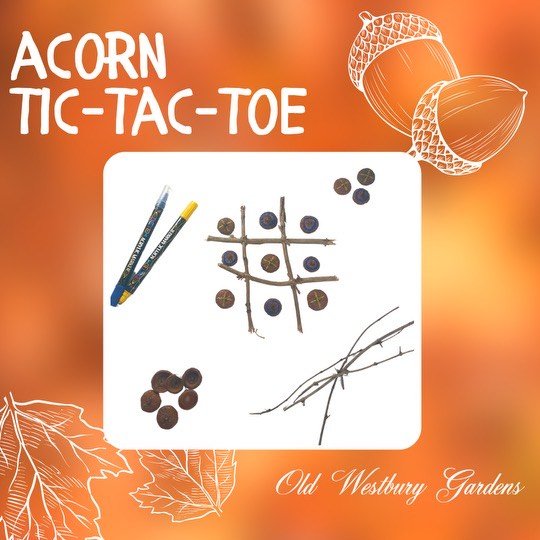
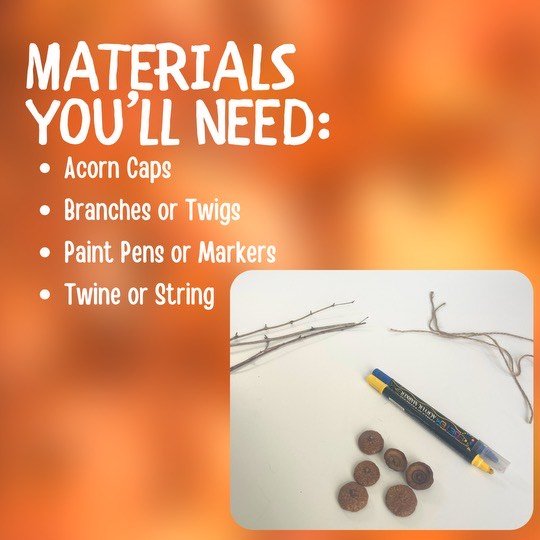

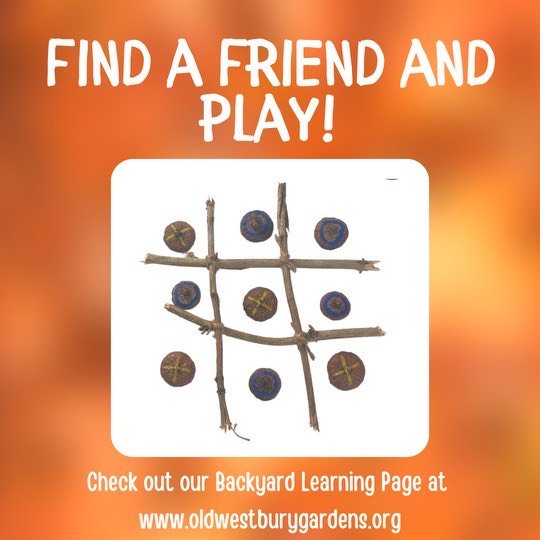
Acorn Tic Tac Toe:
Materials:
Acorn Caps
Branches or Twigs
Paint Pens or Markers
Twine or String
Directions:
Using your Twine or String tie your four branches together to make your 3 by 3 Tic Tac Toe Board
With markers draw 5 Xs and 5 Os on your Acorn Caps
Find a Friend and Play!
October 2024
We Love Trick-or-Treating at Old Westbury Gardens
At Backyard Learning, we highlight different aspects of Old Westbury Gardens’ educational programming every month, bringing you articles and activities to help you connect with nature—even when you're not at the Gardens. We love history and crafting, so this month, in preparation for trick-or-treating at the gardens, we are going to highlight some Trick-or-Treating History and give you instructions on making your own Trick-or-Treat Bag. Learn more about our Trick or Treating Event HERE!
Trick-or-treating has a fun history that goes back a long time! It all started with ancient Celtic festivals, especially one called Samhain, which was celebrated over 2,000 years ago. People believed that on this night, the boundary between the living and the dead was very thin. To protect themselves from wandering spirits, they would light bonfires and dress in costumes to scare them away.
In the Middle Ages, a custom called "souling" began. On All Hallows' Eve, poor people would visit homes, asking for food in exchange for prayers for the dead. This was a way to remember loved ones who had passed away and to bring communities together.
As the years went by, especially in the 19th century, Irish immigrants brought their Halloween traditions to America. Children began to dress up and go door-to-door, asking for treats. This practice became a fun way for families and neighbors to celebrate Halloween together.
By the 20th century, trick-or-treating became a popular activity across the United States. Kids would put on all kinds of costumes, from superheroes to spooky ghosts, and excitedly collect candy from their neighbors. Today, trick-or-treating is a beloved Halloween tradition enjoyed by children all over the world. Do you think the Phipps Children went trick or treating? Maybe they trick or treated around their playhouse and log cabins. When you come to Old Westbury Gardens for Trick or Treating, you’re joining in on a joyful celebration that has been around for centuries! Learn more about our Trick or Treating Event HERE!



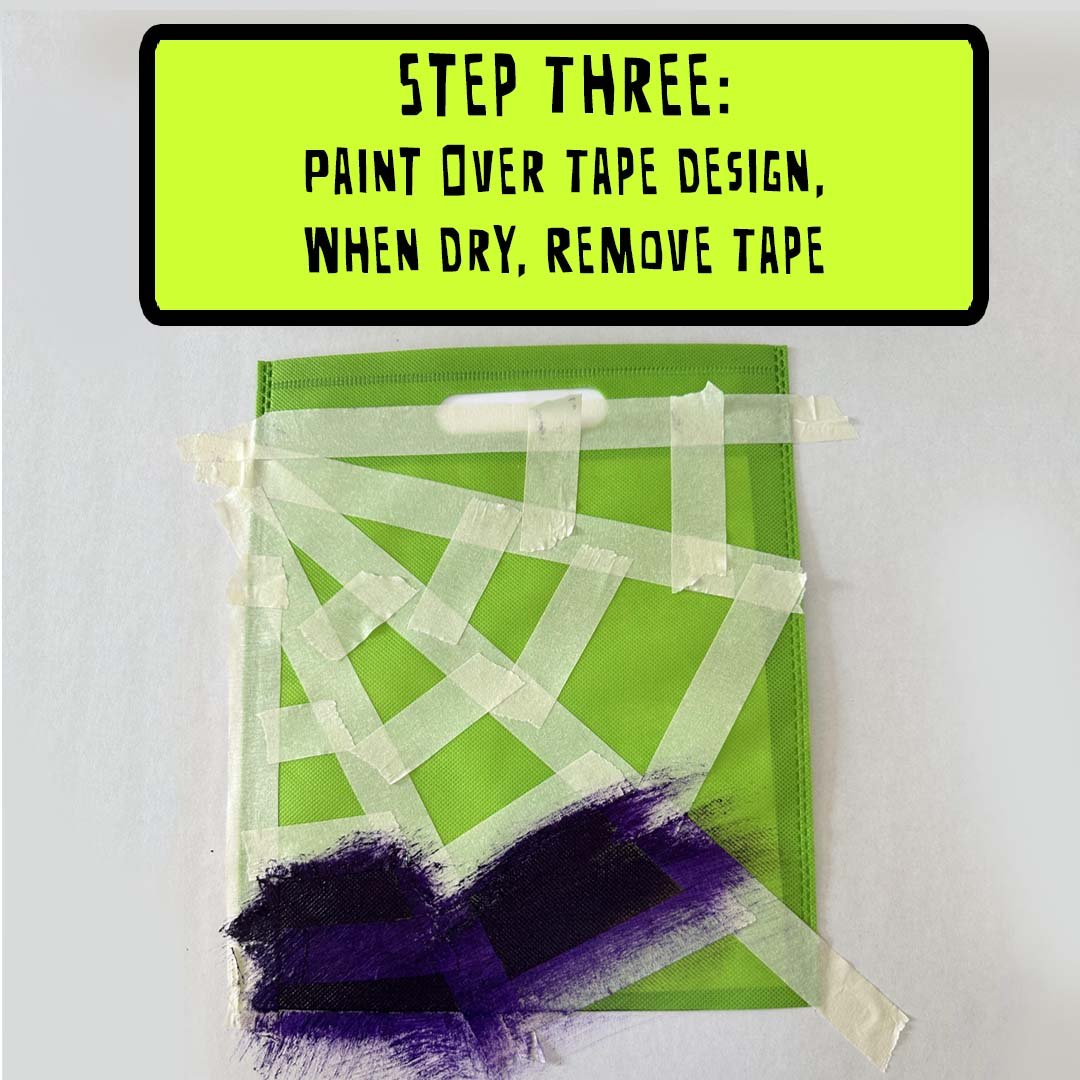
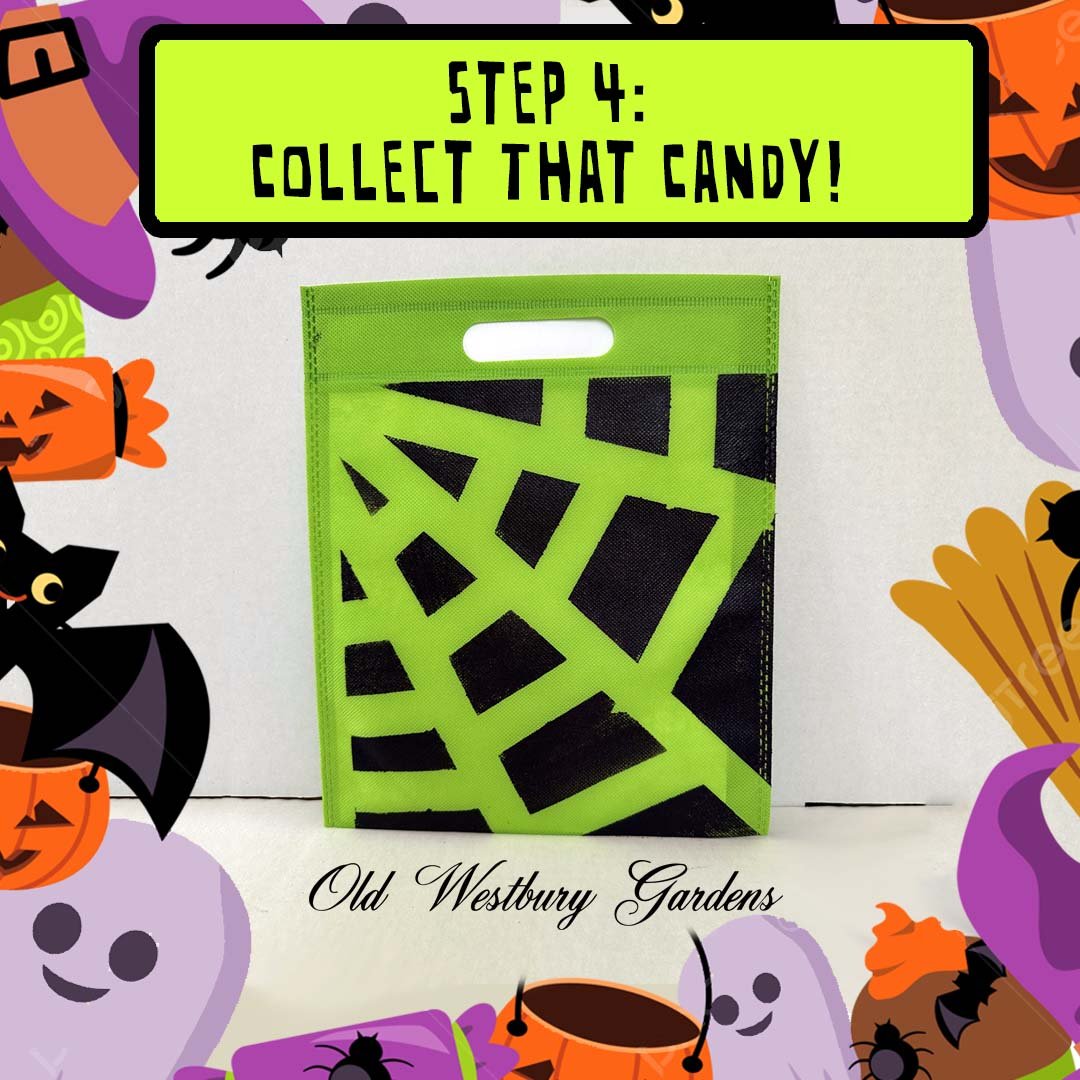
Spider Web Trick or Treat Bag:
Materials:
Fabric Bag
Painter’s Tape
Acrylic or Fabric Paint
Markers (Optional)
Paint Brush
Paper
Directions:
Place your Paper in the Fabric Bag
Using painter’s tape, design your spider web
Paint over your taped design
Wait for your paint to dry, Then remove the Tape
Enjoy Collecting Candy!
September 2024
We Love Creating Magical Experiences at Old Westbury Gardens
At Backyard Learning, we highlight different aspects of Old Westbury Gardens’ educational programming every month, bringing you articles and activities to help you connect with nature—even when you're not at the Gardens. Fall at Old Westbury Gardens is truly magical, with the leaves changing colors and more animals preparing for winter by hunting for nuts. This month, we’re excited to spotlight our Whimsical Wizard School on October 19th, featuring a craft focused on an often misunderstood animal. You can learn more and purchase tickets HERE.
At Whimsical Wizard School, you'll be sorted into one of our enchanting Nature Houses, inspired by animals native to Long Island. Then, you'll decorate your wand as we journey through the Gardens on a scavenger hunt. You'll even practice color mixing and pattern-making skills by creating sand art potions!
For a sneak peek of the event, try out our Make Your Own Magical Companion craft, featuring an owl! At the event, you’ll have the chance to craft a wise owl, a mysterious bat, or a sneaky spider while learning fascinating facts about these misunderstood creatures.
Let’s figure out what’s fact and what is fiction about owls:
Owls can turn their heads all the way around.
Fiction! While owls have impressive neck flexibility, they cannot fully turn their heads 360 degrees.
Owls are evil omens.
Fiction! In some cultures, owls are seen as symbols of death or bad luck, but in many others, they represent wisdom or protection. Like any other animal, owls play an important role in their ecosystems.
Owls are found on every continent except Antarctica.
Fact! Owls are widely distributed and adapted to various environments, from deserts to forests. Some owls native to Long Island include the Great Horned Owl and the Snowy Owl.



Owl Companion Craft:
Materials:
Toilet Paper Roll
Owl Wings (You Can Print Them HERE)
Tape
Markers, Crayons, Stickers, Feathers, etc.
DIRECTIONS:
Using our printable template (or making your own) cut out wings for your owl friend.
Using a piece of tape, place the wings on your toilet paper roll
Decorate your owls’ wings and body however you like!
August 2024
We Love Scouting at Old Westbury Gardens
An Interview with Ella Kahn, Girl Scout and Children's Book Author
Every month at Backyard Learning, we highlight an aspect of Old Westbury Gardens’ educational programming with articles and activities that help you connect with nature—even when you’re not at the Gardens. The Gardens regularly welcomes Girl Scouts of all ages, providing them with opportunities to experience nature and develop a sense of environmental stewardship. This month, we’re highlighting our Girl Scout programs focused on environmental education, featuring an interview with Ella Kahn, a Girl Scout who created a book about environmental education for her Gold Award project.
Laura, Education Manager at Old Westbury Gardens recently had the pleasure of interviewing Ella Kahn, a dedicated Girl Scout and recent graduate of Calhoun High School, who has written a book for her Girl Scout Gold Award project. Ella’s book allowed her to combine her " love of writing and art to educate young readers about the importance of maintaining the delicate balance of nature."
Frankie's Garden Adventure written and illustrated by Ella Kahn, tells the story of a fairy named Frankie who explores a garden ecosystem. Through Frankie's eyes, readers learn about the crucial roles played by plants and insects and discover how even the smallest actions can have a significant impact on the environment. Ella explains she's "always had a passion for the environment and wanted to find a way to share that with others,
The research, time, and effort Ella put into her story is very impressive. Something that stood out to Laura was the impact Girl Scouts has had on scouts like Ella. Ella expressed how Girl Scouts helped her put herself out there, make friends with other scouts, engage the community, and build confidence to promote her story.
As Ella prepares to begin her studies at Colgate University, where she plans to major in environmental science or engineering, she hopes her book will continue to inspire young readers to appreciate and protect the natural world. “I'm really excited, I definitely want to make a difference in the environment, And this is my starting point, because I'm telling people about the importance of certain bugs and plants so that they know how important they are and try to preserve them.” Ella Explained.
Through Frankie's Garden Adventure, Ella Kahn has demonstrated that individual efforts, no matter how small, can lead to meaningful change—a lesson she hopes to pass on to the next generation of environmental stewards. Her project shows the impact environmental scout programs have on scouts creating a love for conservation and nature. We have a link to Ella’s book HERE where you can learn more about her story!
July 2024
We Love Making Mosaics at Old Westbury Gardens!
Every month on Backyard Learning, we highlight an aspect of Old Westbury Gardens’ educational programming, with articles and activities encouraging a connection with nature - even when you are not at the gardens!
This month, as our campers were getting ready for their boat race in the pool we took some time to admire the mosaics across the wall. Looking up close you can see our mosaic is made of all different types of shells! Since most guests do not get to come this close to pool mosaics, we wanted to share some photos and the message inscribed on the pool wall. As well as inspire you to craft a shell mosaic for yourself.
“The three shell mosaic panels are original works of Artemis Jegart Houswright and were executed in the summer of 1969. Although this contemporary architectural treatment is of modern concept, such decorations of grottos and interiors were popular in 18th century England.
Shells from all over the world were selected and applied directly in cement. The natural colored shell mosaics possess a distinctive vitality and liveliness of their own, a richness of surface achieved by the artist’s skillful use of repetition in shell size, convex, and concave sided and contrast of shell shape and color, enhanced by shadows of ever-changing natural light.
The designs call upon nature- water, Canada geese, lilies, reeds, and herons; The center panel, is a romantic allegorical poet whose spirit transcends him as a bird in a tree. “
Summer is a great time for collecting seashells at our Long Island beaches. After getting inspiration from our pool mosaics, and gathering shells, make your own mosaic following our tutorial!


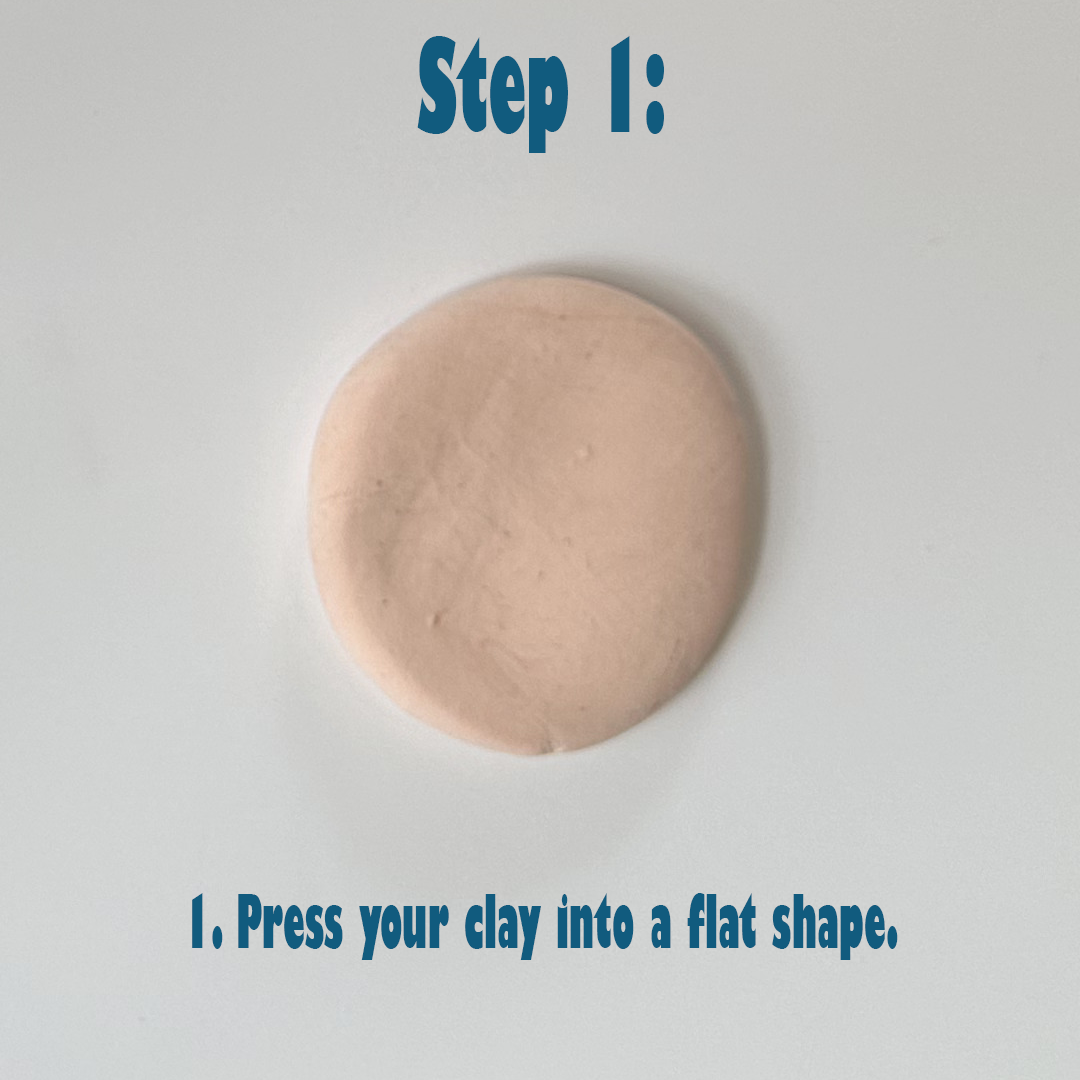


June 2024
Westbury Arts! We Love Our Community at Old Westbury Gardens!
Every month on Backyard Learning, we highlight an aspect of Old Westbury Gardens’ educational programming, with articles and activities that encourage a connection with nature - even when you are not at the gardens!
This month, we are highlighting our partnership with Westbury Arts and the Art programs we offer for children and adults at Old Westbury Gardens. We have enjoyed collaborating with Westbury Arts for many years. Our events have ranged from our exhibit collaboration last August, “When Trees Talk: A Chat and Gardens Tour,” with Artist Alicia Evans, to our shared efforts in promoting cultural events in our community.
Westbury Arts is a nonprofit organization that delivers arts and cultural programs that connect, educate, and inspire our community. At their 255 Schenck Ave location in Westbury, Westbury Arts hosts many exhibits and events. Our education manager, Laura visited the exhibit reception for “Uniquely Me: Expressions Of My Heritage.” This exhibit showcases local students’ works, sharing a visual narrative of what is representative of their family origin, traditions, cultural values, and the pride of being uniquely wonderful. As a former art teacher, our education manager was so proud of the students’ beautiful creations. She especially loved the paintings representing the national flowers of their families' countries. Flowers represent so much with their beauty. They can be a symbol of heritage, and a way of communicating messages to people in our lives.
At Old Westbury Gardens, we offer art programs for both adults and children. Free with Admission, guests can join our series of Water Coloring and Sketching Sessions throughout the year. These programs allow a space for guests to grab some supplies and create artwork surrounding and inspired by the gardens, with the guidance of our education manager. You can see more details on our next series, Summertime Sketching, on our Calendar of Events.
We are pleased to offer our Fresh Takes STEAM Natural Art Summer Sessions this year! This half-day camp allows children to explore different art techniques and mediums in a fun and exciting environment. Registration is still open for both our July and August Fresh Takes Summer Sessions! You can register Here!
We want to thank Westbury Arts for inviting us to their wonderful exhibit, “Uniquely Me: Expressions Of My Heritage,” running from June 9th to July 12th. You can find out more information on the exhibit HERE! We look forward to continuing our collaboration with Westbury Arts, and for our OWG Members to check out their events and exhibits that happen year-round.

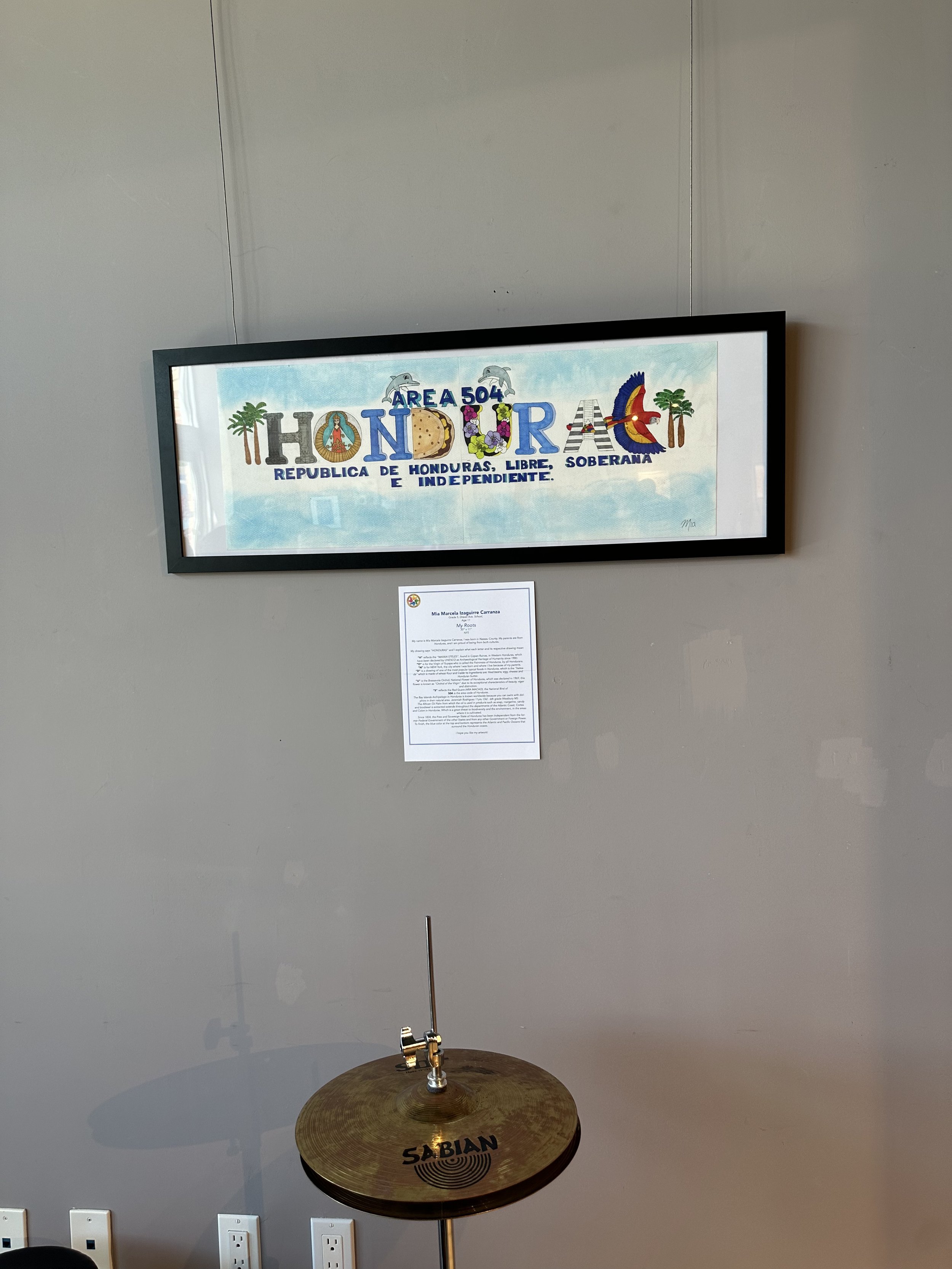




May 2024
Astrono-May! We Love Stargazing at Old Westbury Gardens!
Every month on Backyard Learning, we highlight an aspect of Old Westbury Gardens’ educational programming, with articles and activities that encourage a connection with nature - even when you are not at the gardens!
This month, we are highlighting our monthly Stargazers program at the Gardens. With the help of the members of the Astronomical Society of Long Island, guests will have the opportunity to see the stars and the moon up close with a telescope. The Astronomical Society members are incredibly helpful and are able to share their abundance of knowledge of the night sky. (To learn more about the Astronomical Society of Long Island, you can visit www.asliclub.org)
Even on cloudy nights, you can bring the stars home with you with our Constellation Viewer! This simple craft will project images of the night sky on your walls using your phone flashlight. For our constellation viewer, we chose to make the Little Dipper (but you can choose your favorite constellation to project). The Little Dipper is one of the easier constellations to find in the night sky, as it contains the North Star (also called Polaris), which shines very brightly. The Little Dipper is also known as the constellation “Ursa Minor” or “the little bear constellation” in Latin. We hope you enjoy projecting constellations in your home, and hope you can attend one of our Stargazers events this season!
Imagre Courtesy of Ken Spencer
Constellation Viewer Craft:
Materials You’ll Need:
1 Constellation Image of Your Choice
1 Toilet Paper Roll
Black Construction Paper
Scissors
Tape
1 White Crayon or Pencil
1 Wooden Skewer, Awl, or Toothpick (anything you can use to make a hole)
Markers, Crayons or Paint
Step One: Cut Your Construction Paper
Cut your black construction paper down to a small square that can fit over your Toilet Paper roll.
Step Two: Mark Your Stars
Looking at the constellation image of your choice, mark the stars of your constellation with a white crayon or pencil on your paper.
Step Three: Poke Holes
Using your wooden skewer or toothpick, help your child to carefully poke holes where the stars of your constellation are marked.
Step Four: Assemble Your Viewer
Place your square on top of your toilet paper roll and cut down excess paper, leaving space for four tabs to hold your paper to your toilet paper roll. Tape your constellation onto one end of the toilet paper roll.
Step Five: Decorate!
Decorate your Constellation Viewer however you want using markers, stickers, paints, etc. We decorated ours with planets, stars, and rocket ships!
Step Six: Look Up Using Your Viewer!
It is best to use your viewer in a dark room. Use a flashlight through the open side of your viewer to see your constellation projected onto your walls!
If you make a Constellation Viewer, post it on Instagram and tag us @oldwestburygardenskids ! See you next month on Backyard Learning!







April 2024
April Showers Bring May Mushrooms?
Did you know that Mushroom season in New York starts in Late April and Early May? The changing temperatures and wet soil from the rain is perfect for mushrooms. It is really important to never touch or eat any mushrooms you find in the wild. Why? Because some mushrooms are poisonous! Mushrooms are very important to our ecosystem. They are known as decomposers. They break down organic material into rich nutrients. From small to large, colorful to pale, and patterned or plain, mushrooms come in all colors and shapes. This month, you can follow this tutorial to design your very own mushroom made from recycled materials.
Recycled Mushroom Craft:
Step One: Gather Your Supplies!
· 1 Paper Cup
· 1 Brad Fastener
· 1 Paper Plate
· 1 Wooden Skewer, Awl, or Toothpick (anything you can use to make a hole)
· Markers, Crayons or Paint!
Step Two: Poke A Hole!
Using your wooden skewer or other tool, help your child to poke a hole in the middle of the plate and the cup, to make room for your fastener.
Step Three: Connect Your Mushroom Top!
Place the Brad Fastener through the plate and the cup, and open the fastener from inside the cup.
Step Four: Decorate!
Decorate your mushrooms; some have spots on their tops or other patterns. Add whatever details you would like. You can even show what creatures and plants may be living under your mushroom, or even a Fairy Door!
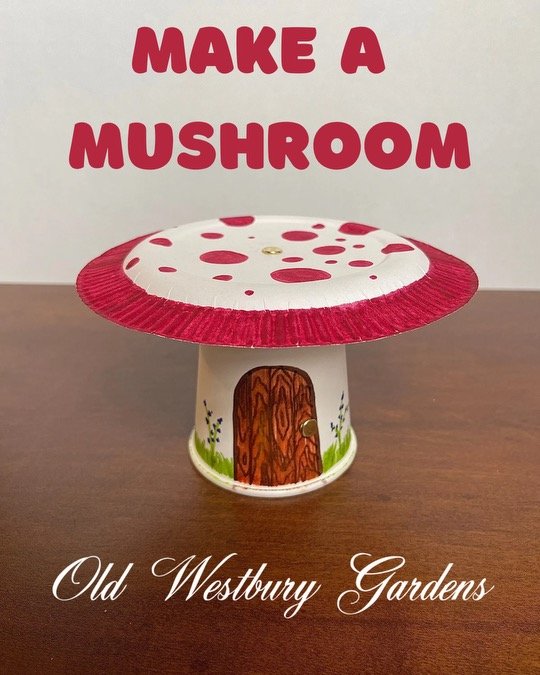
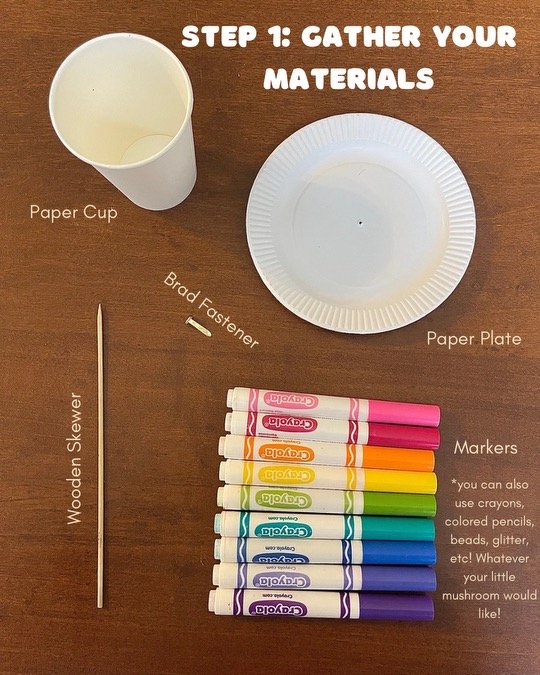
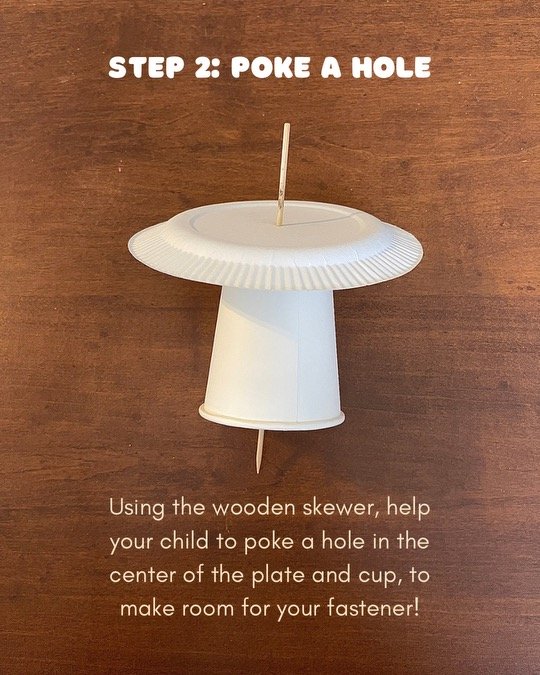
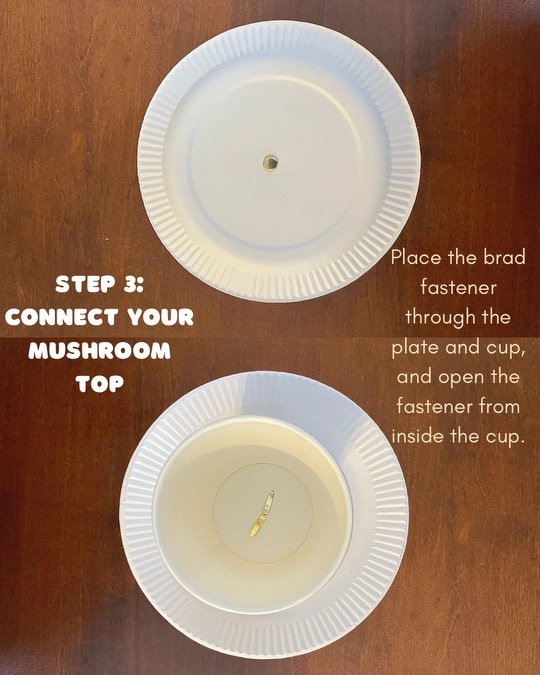
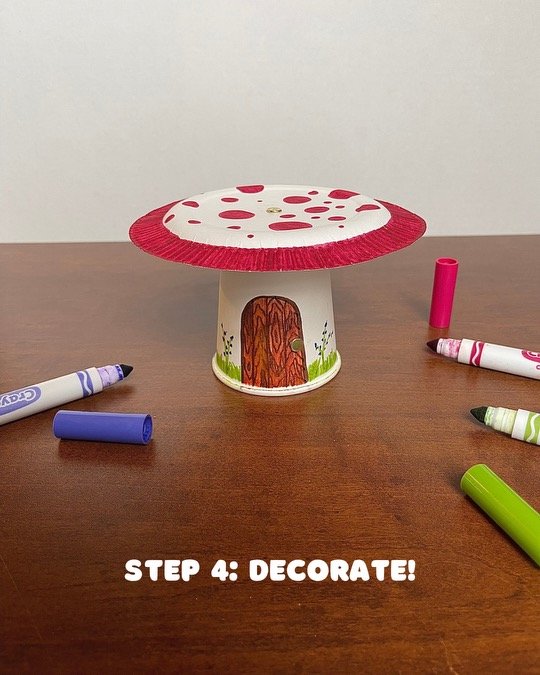
If you make a mushroom, post it on Instagram and tag us at @oldwestburygardenskids! See you next month on Backyard Learning!
March 2024
Support authors from our backyard, Long Island!
An Interview with Bonnie Grubman, author of Trees are Not Just for Birds.
Laura, Education Manager at Old Westbury Gardens, recently sat down with author Bonnie Grubman to discuss her book, Trees Are Not Just for Birds.
Like most children, Bonnie began reading as a child through picture books. She recalls growing up in an apartment building and spending hot summer nights seated on her fire escape, reading her picture books. In our interview she states “I would take my picture books outside and get to travel, inside the books all over the world. And so I really, really grew a tremendous fondness for picture books”.
Bonnie taught nursery school for about seventeen years and credits her former students for teaching her everything she knows about the picture book world. Her teaching experience gave her insight into the topics students were most interested in reading and learning about.
While out in her backyard one day, Bonnie noticed a baby bird hopping around. She thought the baby had fallen out of the nest, and after hearing its chirping, wanted to help this baby bird. Bonnie “realized very shortly after that the little bird was actually communicating with its mom. And she seemed to be guiding him from a distance, as to where to go...I watched the baby bird just to make sure he was safe on the ground, and I found the nest, and it was then that I looked up at the tree and felt such an appreciation for the work that probably went into the nest... and I wondered: ‘how did that mom bird decide on which tree she was going to build her home?’ So, I think that was the day that this story came into my imagination.” And thus, came Trees Are Not Just for Birds.
Bonnie has written over a dozen picture books, and when asked which is her favorite, she states, “Walter and Willie Go Fishing...I think of the six Walter and Willie books, this might be my favorite title.” She says she loves her Walter and Willy series, “because it's extremely dear to me.” She found inspiration for the series from her two twin grandsons, who had been playing in a mud hole one day, “as happy as pigs in the mud.”
In our interview, Bonnie described being an author as “a dream come true,” and hopes to author more books for as long as she can.
We are excited to announce we will be doing an Author Night event with Bonnie Grubman, on May 17th at the Barn at Orchard Hill. You can listen to Bonnie read Trees Are Not Just for Birds and join in on the fun for an evening at the gardens. You can find out more on our events page HERE!
You can find more at www.bonniegrubmanbooks.com
February 2024
Support our resident birds by making a bird feeder!
Every month at Backyard Learning, we highlight an aspect of Old Westbury Gardens’ educational programming with articles and activities that help you connect with nature—even when you’re not at the Gardens. This month we’re highlighting our resident birds that stay with us through the winter months, and we’re making a simple, recycled bird feeder! If you want to learn more about the birds at Old Westbury Gardens you should come to our Spring Breakout: Birds and Bugs program on Wednesday, April 24th! [Learn more here.]
Here at Old Westbury Gardens, we love our birds. Seeing Mallard ducks, Canadian geese, chimney swifts, starlings, and cardinals is always a treat when walking through the gardens. Sometimes we even get lucky and see the great blue heron fly over our lakes. Even in February, there are many birds making their home here. One bird we love is the White-Throated sparrow. They are easily identifiable with their white throat and yellow “lores” above their eyes. They are frequent visitors to bird feeders in winter and are the most common sparrow species. To attract these adorable sparrows to your bird feeder, leave millet and sunflower seeds.
Our activity this month is all about recycling household items to make a hanging bird feeder. You can watch our video this month and see how we take a paper plate, and string or yarn and make a bird feeder that can attract birds like the White-Throated sparrow. If you make and decorate your own bird feeder, post it on Instagram and tag us at Oldwestburygardenskids!
JANUARY 2024
Storybook Stroll: The Magical Snow Garden by Tracey Corderoy
Every month on this Backyard Learning page, we’ll highlight an aspect of Old Westbury Gardens’ educational programming, with articles and activities that can help you connect with nature even when you are not at the Gardens. This month, we’re highlighting our popular Storybook Strolls with a book recommendation and activity.
Our activity this month is inspired by The Magical Snow Garden by Tracey Corderoy, and it’s all about reusing the wrapping paper and tissue paper we used during the holidays. At Old Westbury Gardens we are committed to helping our environment. By reducing and reusing paper, we will reduce the impact involved in creating paper, including wood extraction, processing, production, transportation, use, and disposal. Most wrapping paper cannot be recycled if it has foil elements, so when that is the case, it is best to find a use for it beyond its life wrapping gifts. In this activity we will be just like Wellington the penguin and make our own paper flowers to decorate our spaces!
You can watch our video to learn how to make wrapping paper flowers, just like Wellington the penguin!
ARCHIVES
Let the summer fun begin where long days and warm nights are filled with continued learning and discovery. Reference our backyard learning resources to keep the curiosity growing all season long.
New ideas for summer science!
Let’s go fly a kite. One of the biggest benefits to island life is beach time. Sea breezes occur during hot, summer days because of the unequal heating rates of land and water and are a great resource for beach-goers to cool down amidst towering temps. Grab a kite from a local shop and test nature’s wind power. How long can you keep that glider flying strong?
Human sundial. Losing track of time? Use the power of the sun and the height of your little one to decipher the day’s timing. Pick five notable times per day, right around meals and snacks for convenience. Have your child stand in a full sun zone while you trace their shadow, paying particular attention to their footprint. Note and record the time on the shape. Return to that same spot (same footprint) and re-trace your child’s shadow four additional times through the day and evening. Observe together how the shapes have morphed and changed over the course of the day. What can you learn about the sun’s cycle from this activity?
Night light. Fireflies are nature’s night light. Their bioluminescent flashes play an important annual role in finding a mate. Play a friendly game of catch and release to highlight these beneficial insects, some species of which prey on common garden pests. Watch as they synchronize in your backyard. Why do you think that’s helpful for their survival?
Let your feet take you to the sidewalk, a local park or one of our famous Long Island beaches and always remember to respect one another’s discovery space and keep safe.
Visit our youtube channel with video exploration experiments and How To’s to learn fun facts and get your creative juices flowing.
Exploring our 2022 Seward Johnson Exhibition?
Click our family observation sheet below to get started.
Hunt the Gardens for history!
Click our photo hunt below to get started.
Download support materials for your At-Home Duck Feather Experiment
Here are a few links to other amazing at home activities with free access or free trials:
When you don’t know why woodpeckers peck wood- Science
https://mysteryscience.com/school-closure-planning
When they’ve read every book in the house- Reading/ Literacy
https://www.getepic.com
When they’re hungry for more- Culinary
https://www.americastestkitchen.com/articles/2253-kitchen-classroom-week-1
When they crave peer connection- For Kids By Kids ages 8-11
https://www.touchableearth.org/
When they’re feeling wiggly- Movement
https://www.gonoodle.com/
When it’s raining outside- Weather
https://weloveweather.tv/for-kids/
When they need a virtual hug from Sesame Street- Emotional Health
https://www.sesamestreet.org/caring
When they’ve played every game- Art & Design
https://scratch.mit.edu/
When they think they know it all- Middle School to College Level students
https://hippocampus.org/
















